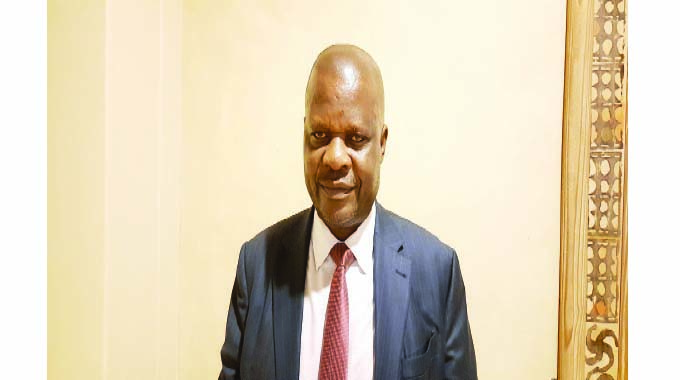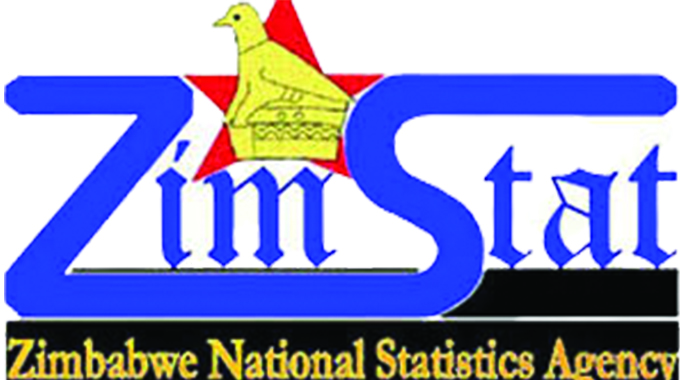ZimStats exposes Prof Hanke’s misleading inflation rates

Business Reporter
THE Zimbabwe National Statistics Agency (ZimStats) has urged stakeholders to disregard misleading inflation reports based on deliberate social media disinformation.
In a detailed statement in which it dismissed the wild inflation rates being continuously peddled by American scholar, Professor Steve Hanke on social media platforms about Zimbabwe and other developing economies, ZimStats director general, Mr Taguma Mahonde, urged the market to be warry of such deliberate disinformation.
“Of late some academics decided to disinform the world on inflation rates being calculated in various countries, Zimbabwe included.
“Some media houses, activists and politicians, without checking validity and intentions of the source, jumped onto the bandwagon of condemning what is right and propelling unscientific calculations,” said the agency,” he said.
“As usual, the loser is the general public who end up with the dilemma of whether to believe or not to believe.”
ZimStats said the continued social media disinformation regarding inflation has prompted it to respond in an attempt to enlighten the public and take everyone back to where it all started.
“Accounting for inflation has been around for more than three centuries. The early history of coming up with methods to calculate inflation evolved over a long period stretching from 1700 to 1879,” said Mr Mahonde, as he traced the development of inflation analysis approaches, including those that have failed the test in the past.
“Most countries the world over, and Zimbabwe included use the Laspeyres Price Index to measure inflation. The IMF statistics division, World Bank, International Labour Organisation and other international bodies promote the development of internationally accepted statistical methodologies.
“These organisations foster availability of high-quality, consistent, and comparable macroeconomic and financial statistics. They produce the Consumer Price Index manual for the scientific production of statistics and offer advice, review missions and technical assistance to member countries.”
As such, ZimStats said Zimbabwe and all member states have no option but to abide by the rules of the game when calculating inflation.
On the contrary, the agency said Prof Hanke uses exchange rates and stock market indices to calculate inflation rates and bases his argument on the ‘Purchasing Power Parity’ theorem.
“In Zimbabwe he used the Old Mutual Implied Rate for a long time. This is besides the fact that stock market prices are driven by -a) fundamental factors and these have much to do with performance of firms, b) technical factors that are related to stock price history in the market and, c) market sentiment, which is the most vexing and subjective category, where subjectivity comes into play and, d) speculative motive,” said Mr Mahonde.
“However, the goods and services market is not driven by the same factors as the stock market. Accounting for inflation involves tracking prices of commodities in the goods and services market.
“This is not the same as tracking price developments in the exchange and stock markets, thus Prof Hanke’s model and methods become questionable.
“Of interest is that, in as far back as the 18th century the French in their wisdom could differentiate the stock, goods and foreign exchange markets. They respected the differences in these markets as well as the different factors that drive these three distinct markets.”
What is true, ZimStats further explained, is that the markets are not independent of each other as developments in one market can affect another.
“However, they were, are not and will never be substitutes,” said the agency.
On official versus parallel exchange rates, ZimStats said the principle used locally and internationally when collecting prices data is that enumerators collect prices that consumers would pay for goods or services.
In cases where prices are quoted in foreign currency, it said enumerators are required to ask the shop personnel how much the commodity costs in local currency. “Conversion is done by the shop-owner so that the enumerator captures the price that consumers would pay. This principle also puts to rest the argument put forward by some, that ZimStats captures prices at official exchange rates only,” said the agency.
“Notable is that, enumerators collect going prices in outlets, be they supermarkets, liquor shops, saloons, open markets and so on.
“In short, ZimStats does not go about looking for exchange rates or cost build-ups as they are already factored in the final price. ZimStats Methodology Sampling of Outlets In undertaking the Consumer Price Survey (CPS), ZIMSTAT uses purposive or judgmental sampling of outlets in both urban and rural areas.”
The agency said the sampling approach is the most recommended for such surveys and has the advantage that closed outlets and outlets that change their line of business are easily replaced.
In compiling the Consumer Price Index, ZimStats said it monitors price levels of 495 products categorized according to United Nations Statistics Division’s Classification of Individual Consumption by Purpose (COICOP).
Further, more than four thousand retail outlets in both rural and urban areas are surveyed throughout the country every month, with thorough data collection and checking for errors, said the agency.
Following the coming in of the Second Republic in 2018, ZimStats noted how Professor Hanke was very positive about the country and would proffer his proposals on monetary sector reforms in a positive way.
“It would appear Professor Hanke was looking for a few million-dollars-contract in exchange of consultancy work to stabilise the monetary side of the Zimbabwe economy,” said Mr Mahonde.
“His tweets were telling in 2017, as he was not aggressive but showed interest. The professor was doing a combination of public relations and scouting for a consultancy contract. He pursued this mirage for over 12- months.
“In the process he made sure he reminded everyone of his previous engagements with other Governments like Bulgaria. Interestingly, his prescription remained the same: a) dollarise and b) establish a currency board. By the last quarter of 2018 it then dawned on the professor that no contract was coming his way.”
ZimStats said it was at this juncture that the ‘animal’ in the Professor took charge and up to now he talks negatively of authorities in Zimbabwe with most being labelled incompetent.
“He pushed the agenda that wrong calculation of consumer price indices or suppression of inflation rates is synonymous with ZimStats. A person outside any country cannot go through a systematic process of price data collection in retail outlets in a determined sample and apply the requisite processing techniques to come up with an inflation index,” said the agency.
“Authorities in Turkey have reminded the professor that there is no way he can calculate inflation in Turkey by use of exchange rate and stock market indices.
“Interestingly, it is not ZimStats alone that is accused of all sorts of ills. The professor has a list of over 30 countries that are all alleged to be feeding stakeholders with wrong statistics. Of interest is the way the professor presents his statistics.”
Mr Mahonde said it was disturbing and ironic that Prof Hanke has issues with every other economy except the USA.
“Why? Because his model suddenly collapses as it is based on the exchange rate to the US dollar. So, when it comes to America there is no exchange rate to use in his model, leaving America out of the group of “problem” countries,” he said.
“Hanke-Henry Permanent Calendar Hanke’s unique way of calculating inflation is not the only invention he has ushered to mankind. He once came up with a calendar reform proposal.
“With the professor’s calendar every calendar date would always fall on the same day of the week. While the time and effort put in this calendar innovation is not public knowledge, the public is privileged to know the no traction, no takers result.”










Comments